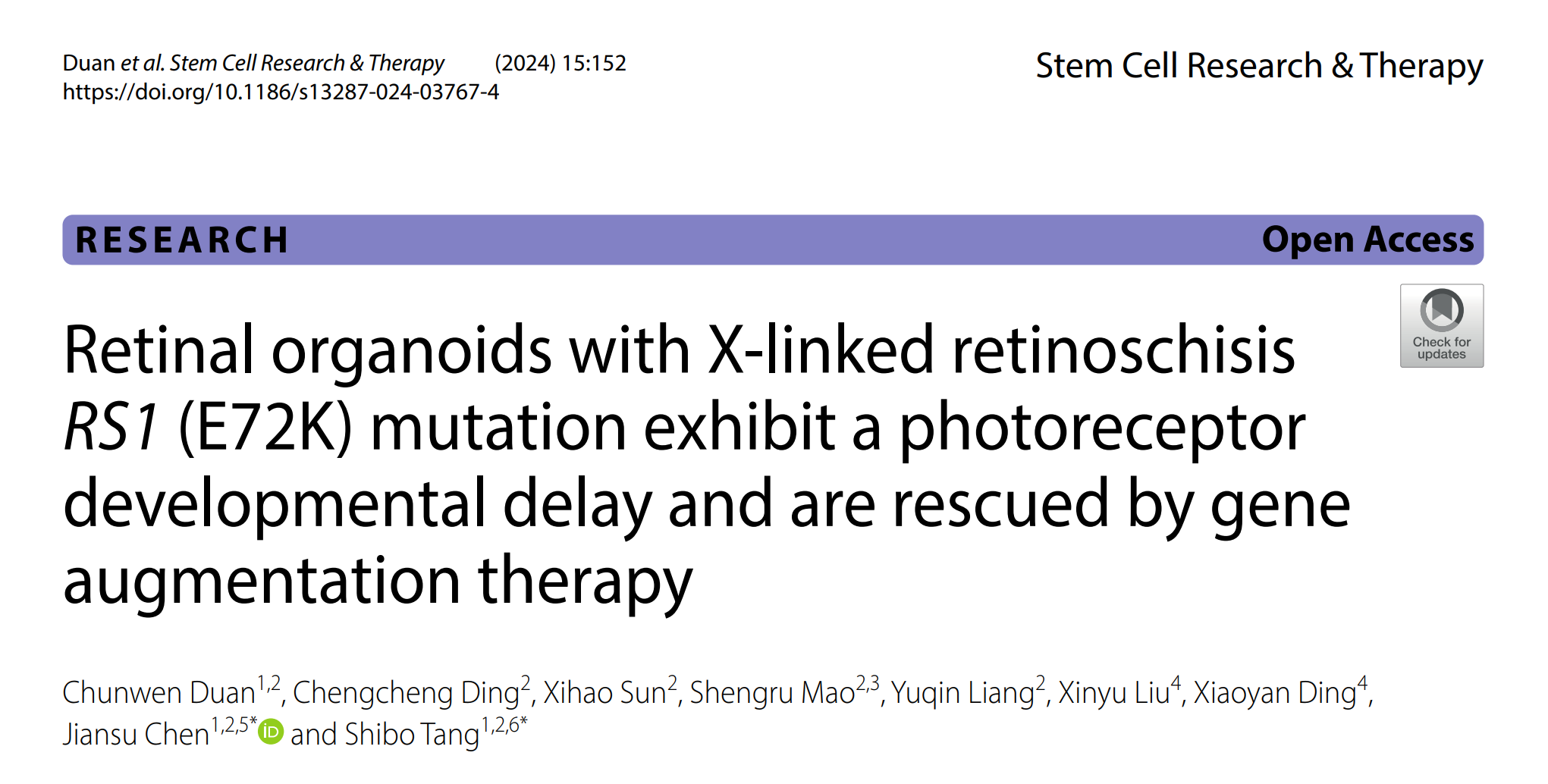- 首页
- 关于我们
概况介绍 研究方向 人才培养 委员会/committee
- 员工团队
特聘专家 主要领导 行政团队 技术团队 PI团队- 科研平台
中心实验室 实验动物中心 生物样本库- 最新资讯
- 首页
- 关于我们
概况介绍 研究方向 人才培养 委员会/committee
- 员工团队
特聘专家 主要领导 行政团队 技术团队 PI团队- 科研平台
中心实验室 实验动物中心 生物样本库- 最新资讯
Retinal organoids with X-linked retinoschisis RS1 (E72K) mutation exhibit a photoreceptor developmental delay and are rescued by gene augmentation therapy发布日期: 2025-05-02
Abstract
Background X-linked juvenile retinoschisis (XLRS) is an inherited disease caused by RS1 gene mutation, which leads to retinal splitting and visual impairment. The mechanism of RS1-associated retinal degeneration is not fully understood. Besides, animal models of XLRS have limitations in the study of XLRS. Here, we used human induced pluripotent stem cell (hiPSC)-derived retinal organoids (ROs) to investigate the disease mechanisms and potential treatments for XLRS.
Methods hiPSCs reprogrammed from peripheral blood mononuclear cells of two RS1 mutant (E72K) XLRS patients were differentiated into ROs. Subsequently, we explored whether RS1 mutation could affect RO development and explore the effectiveness of RS1 gene augmentation therapy.
Results ROs derived from RS1 (E72K) mutation hiPSCs exhibited a developmental delay in the photoreceptor, retinoschisin (RS1) deficiency, and altered spontaneous activity compared with control ROs. Furthermore, the delays in development were associated with decreased expression of rod-specific precursor markers (NRL) and photoreceptorspecific markers (RCVRN). Adeno-associated virus (AAV)-mediated gene augmentation with RS1 at the photoreceptor immature stage rescued the rod photoreceptor developmental delay in ROs with the RS1 (E72K) mutation.
Conclusions The RS1 (E72K) mutation results in the photoreceptor development delay in ROs and can be partially rescued by the RS1 gene augmentation therapy.
Keywords X-linked retinoschisis (XLRS), Retinal organoids (ROs), Human induced pluripotent stem cells (hiPSCs), Photoreceptor, Gene augmentation therapy
相关文章 - 员工团队
- 员工团队

